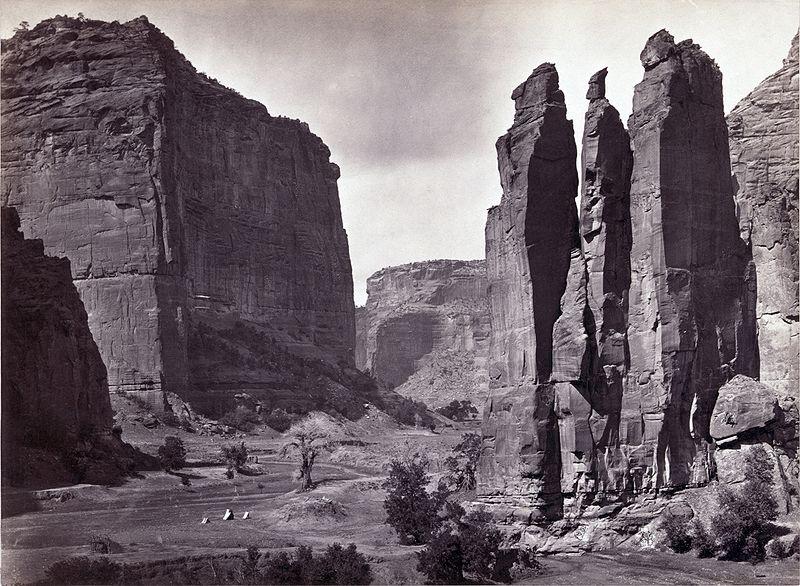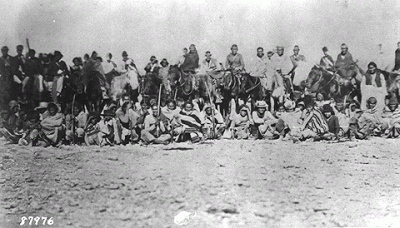 |
| Kit Carson |
During the time of the Civil War one of the most famous frontiersmen was Kit Carson. He left his home in Missouri when he was 16, and spent years exploring the west, serving as a guide to “the Pathfinder,” John C. Fremont, who became a Union general, fighting in the Mexican War and serving as an agent to the Indians. At the Battle of Valverde in 1862, Carson fought on the Union side commanding a regiment of New Mexico volunteers. In 1864 the famous Carson was called upon by the United States Army to aid in troubles with the Navajo Indians.
 |
| Fort Sumner |
There had been trouble with raids from the Navajo for many decades, but they had redoubled during the Civil War after a lull in the 1850s. The New Mexicans demanded help from Brigadier General James Carleton, commander of the United State's District of New Mexico. He enlisted Carson's help, planning to use the turmoil of the Civil War to clean up the Navajo problem and advance his own career.
 |
| General James Carleton |
Carleton wished to eliminate the Navajo tribe, and gave Carson the message for the Navajo:
You have deceived us too often, and robbed and murdered our people too long, to trust you again at large in your own country. This war shall be pursued against you if it takes years, now that we have begun, until you cease to exist or move. There can be no other talk on the subject.
Carson wanted to pursue a more mild approach. With the threat of resignation Carson got the plans moderated, but they still called for a scored earth policy toward the Navajo. His force was made up of friendly Indians and New Mexico volunteers. The fighting with the Navajo did not involve pitched battles. It was made up of several months of raids. Carson used the Indians' crops and destroyed the rest, and captured all the prisoners he could send to Fort Sumner.
 |
| Navajo riding through Canyon de Chelly |
The Navajo's stronghold was Canyon de Chelly. In January 1864 Carson decided it was finally time to attack it. He moved out on January 6th, 150 years ago today, riding with almost 400 men of the 1st New Mexico Cavalry. He sent Captain Albert Pfeiffer to close off the east end of the canyon with 100 troopers, while he would tackle the west end with the rest of the force. But in a snowstorm Pfeiffer missed the entrance to the canyon, and when Carson rode through he found it empty.
 |
| The Canyon |
The Navajo gathered at a place called Fortress Rock, where they had stored their supplies of food. Although it seemed that the Navajo had won in this engagement, the opposite proved to be true. Many of their supplies had been destroyed, and within a few months almost 8,000 of them turned themselves into the government.
 |
| Navajo |
Carson left the service, his duties done, but the plight of the Navajo was far from over. Over the next few months they would undergo what is called the Long Walk when the US Army moved them from their traditional homeland on the border of Arizona and New Mexico, 450 miles to an area 40 square miles large. The 8,000 to 9,000 people traveled in about 50 groups, and probably 200 died along the way. Their problems did not end when they arrived. More Indians were sent to the reservation than had been planned at the beginning, and the government ended up having to pay $1.5 million a year to feed them. Four years later, in 1868, the United States government deemed the scheme a failure, and sent them to a new much larger reservation, on their traditional homeland.








